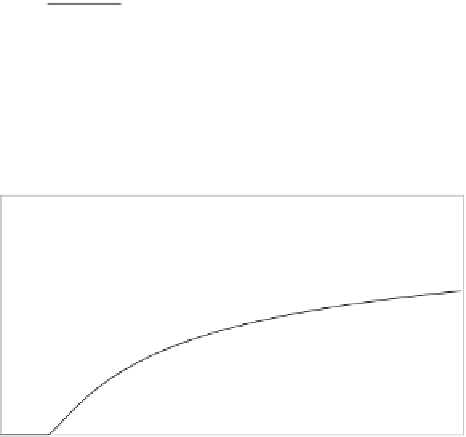Environmental Engineering Reference
In-Depth Information
The water pumped in the well partially originates from the surface water body.
This part is often referred to as
bank filtrate
. Very often the flow pattern is
a combination of natural groundwater baseflow towards the bank and the imposed
regime by the well gallery. For very small pumping rates the well withdraws
ambient groundwater only and no bank filtrate. Bank filtrate starts to play an
increasing roll if the pumping rate is increased above a critical value
S
cript
.
Exercise 15.2. Verify, using different pumping rates, that the critical pumping rate
for bank filtration is given by the following formula
Q
crit
¼ Q
x
0
px
0
(15.8)
where
A
x
determines base flow towards the is potential boundary and
a
x
the distance
between well and boundary. Use a plot of the flow pattern to decide whether there is
bank filtration or not!
Exercise 15.3. Confirm for some sample runs the dependence of groundwater and
surface water withdrawal from pumping rate.
Figure
15.4
visualises the exact formula for the share of water originating from
the surface water body (bank filtrate) and ambient groundwater. The formula is
given by:
s
Q
Q
crit
s
Q
Q
crit
!
!
Q DC
Q
2
p
Q
crit
Q
¼
arctan
1
1
(15.9)
Hint: utilize that in streamfunction plots for equidistant levels the same amount
of water flows between two contour lines. In the situation shown in Fig.
15.5
the
percentage of bank filtrate is 4/11
36%. The entire well discharge is divided into
11 equal parts, four of them originating from the bank on the left side of the figure.
100
Ground water [%]
Surface Water [%]
80
60
40
20
0
0
1
2
3
4
5
6
7
8
9
10
Pumping rate [dimensionless - scaled to critical pumping rate]
Fig. 15.4 Percentage of groundwater and bank filtrate withdrawal for a single well, depending on
pumping rate






























